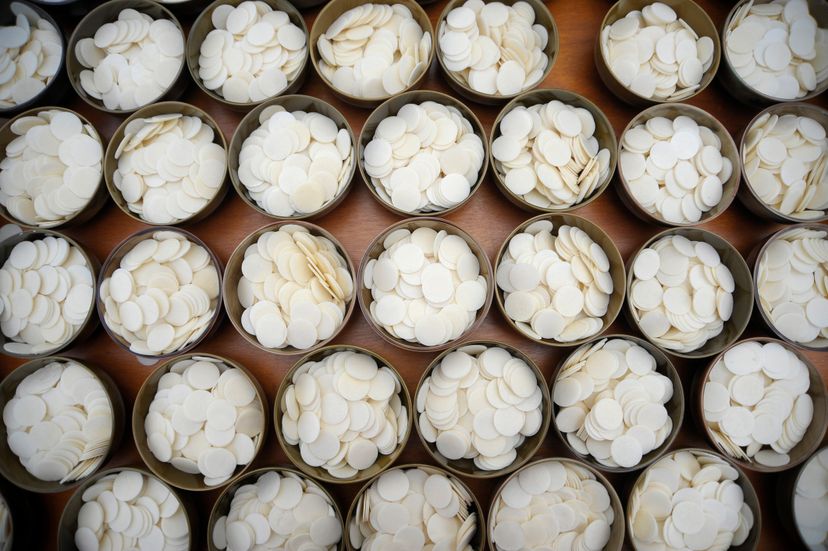
Ingesting a communion wafer is an important part of celebrating Catholic Mass, but what if the ingredients make your body sick — no matter how small the amount?
This is the issue faced by Catholics who have celiac disease and other types of gluten intolerance. Gluten is a naturally occurring protein in wheat flour used to make communion wafers. While some people request gluten-free options, the Vatican recently made it clear that communion wafers must contain at least some gluten. But why?
Advertisement
In a letter sent to Catholic bishops from the Vatican in June, the church reiterated rules that communion wafers must be made purely of wheat flour. Wafers made from other types of flour — such as rice, potato or tapioca, which may not cause issues for people with gluten allergies and intolerances — are banned. The communion wafers, which are generally made from wheat flour, oil and salt, do not contain a leavening agent, like yeast, that would cause the dough to rise.

What they do contain, at least according to Catholic Christians, is the body of Jesus Christ. According to the Catholic church, Jesus started the tradition of Holy Communion, also known as the Eucharist, during the Last Supper with his disciples. It was his final meal before he was crucified and died. As the disciples consumed wine and bread made with wheat, Jesus described these substances as his blood and body. The Catholic faith holds that the communion wafer is not symbolic, but a literal consumption of Christ's flesh through a mystical process called transubstantiation — and that the unleavened bread must have wheat.
So what's a Celiac or gluten-sensitive Catholic to do? A 2003 policy issued by the Vatican does allow for low-gluten wafers as long as they "contain a sufficient amount of gluten to obtain the confection of bread" and there are special bakeries who offer these options to Catholic churches.
Advertisement

